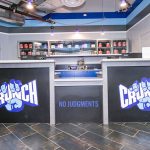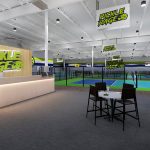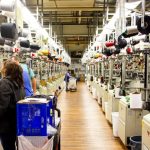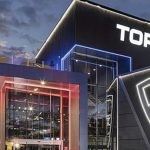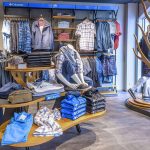L.L. Bean said its Data Center In Freeport, Maine recently
obtained LEED Silver certification, becoming the first LEED Silver
certified data center in New England. The USGBC's LEED program is a
voluntary rating system designed to encourage companies to build
environmentally sustainable, high-performance buildings.
The
USGBC's LEED program is a voluntary rating system designed to encourage
companies to build environmentally sustainable, high-performance
buildings.
“Designing a LEED built data center is an enormous
feat. Data centers are industrial buildings that don't fit easily into
the LEED concept,” said Stafford Soule, Director of L.L.Bean's
Information Infrastructure. “idGroup was able to create a concept and
design that incorporated our technical and environmental criteria.”
Beginning
with a conceptual design process, and the investigation of several
sites, the idGroup design evolved to suit L.L.Bean's developing
program. On a site adjacent to an existing L.L.Bean facility, the new
18,000 SF Data Center meets the criteria of both LEED Silver and the
American Society of Heating Air Conditioning Engineering (ASHRAE).
Examples of LEED elements include regional sourcing of materials,
minimized site disturbance and the recycling of 50% of all construction
waste. The wood used for the structure's distinctive New
England-style shingles was harvested within a 500-mile radius, using
sustainable forestry practices. Further ensuring LEED criteria was met,
Chris Schafner and Erik Ruoff of The Green Engineer (based in Concord,
Massachusetts) consulted on the project.
“IdGroup is proud to work with L.L.Bean to design its first LEED built
data center, which is the first of its kind in Maine, and in New
England,” said Brad Gray, idGroup Project Manager. “L.L.Bean's new
Data Center combines the company's sustainability requirements with a
design aesthetic that reflects its outdoor heritage.”
The Data
Center was designed to hold up to 144 racks to contain servers that
support L.L.Bean's growing internet business. Each 4.2KW rack in a data
center of this type produces 1400 watts of heat per square foot 500
Kilowatts total, or the equivalent of three hundred forty hair dryers
running nonstop. The Building Management System (BMS) informs the
Computer Rack Air Conditioning (CRAC) units to absorb the appropriate
amount of warm air generated by the racks and cool it over a series of
coils, returning cool air into the room.

